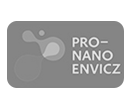EUropean Supersites for Atmospheric Aerosol Research - Photoacoustic aerosol spectroscopy.
Grant Agency
Year from
2007
Year to
2011
Objectives:
The objective of the project EUSAAR is the integration of measurements of atmospheric aerosol properties performed in a distributed network of 20 high quality European ground-based stations (Supersites).
Although particulate matter has become a priority under the Convention in relation to the envisaged review and possible revision of the Gothenburg Protocol, it is only measured at comparably few regional background stations. The present situation is, therefore, clearly not sufficient in the context of an integrated atmospheric observing system for air quality and climate studies.
The measurements of non-regulated aerosol properties of interest to air quality and global climate modelling are performed outside of coordinated protocols, access to this information is, at present, rather uneasy and not provided in a coherent manner. EUSAAR is particularly focussing on the following key parameters for which a clear lack of coordination exists:
- aerosol chemical properties (inorganic/organic composition)
- aerosol physical properties (size distribution, mass)
- aerosol optical properties (light scattering/absorption coefficient, optical depth)
- aerosol 3D-distribution (vertical profile)
These parameters are the basic information required to detect any long-term change in aerosol source emissions and assess possible climatic effects of aerosols that may result from these changes.
EUSAAR (European Supersites for Atmospheric Aerosol Research) is an EU-funded I3 (Integrated Infrastructures Initiatives) project carried out in the framework of the specific research and technological development gramme "Structuring the European Research Area - Support for Research Infrastructures".
The objective of the project EUSAAR is the integration of measurements of atmospheric aerosol properties performed in a distributed network of 20 high quality European ground-based stations (Supersites).
Although particulate matter has become a priority under the Convention in relation to the envisaged review and possible revision of the Gothenburg Protocol, it is only measured at comparably few regional background stations. The present situation is, therefore, clearly not sufficient in the context of an integrated atmospheric observing system for air quality and climate studies.
The measurements of non-regulated aerosol properties of interest to air quality and global climate modelling are performed outside of coordinated protocols, access to this information is, at present, rather uneasy and not provided in a coherent manner. EUSAAR is particularly focussing on the following key parameters for which a clear lack of coordination exists:
- aerosol chemical properties (inorganic/organic composition)
- aerosol physical properties (size distribution, mass)
- aerosol optical properties (light scattering/absorption coefficient, optical depth)
- aerosol 3D-distribution (vertical profile)
These parameters are the basic information required to detect any long-term change in aerosol source emissions and assess possible climatic effects of aerosols that may result from these changes.
EUSAAR (European Supersites for Atmospheric Aerosol Research) is an EU-funded I3 (Integrated Infrastructures Initiatives) project carried out in the framework of the specific research and technological development gramme "Structuring the European Research Area - Support for Research Infrastructures".
prof. Ing. ZELINGER Zdeněk CSc.
Room
019, 04A
Department
Extension
3046, 3085
E-mail
zdenek.zelinger jh-inst.cas.cz
jh-inst.cas.cz
 jh-inst.cas.cz
jh-inst.cas.cz














